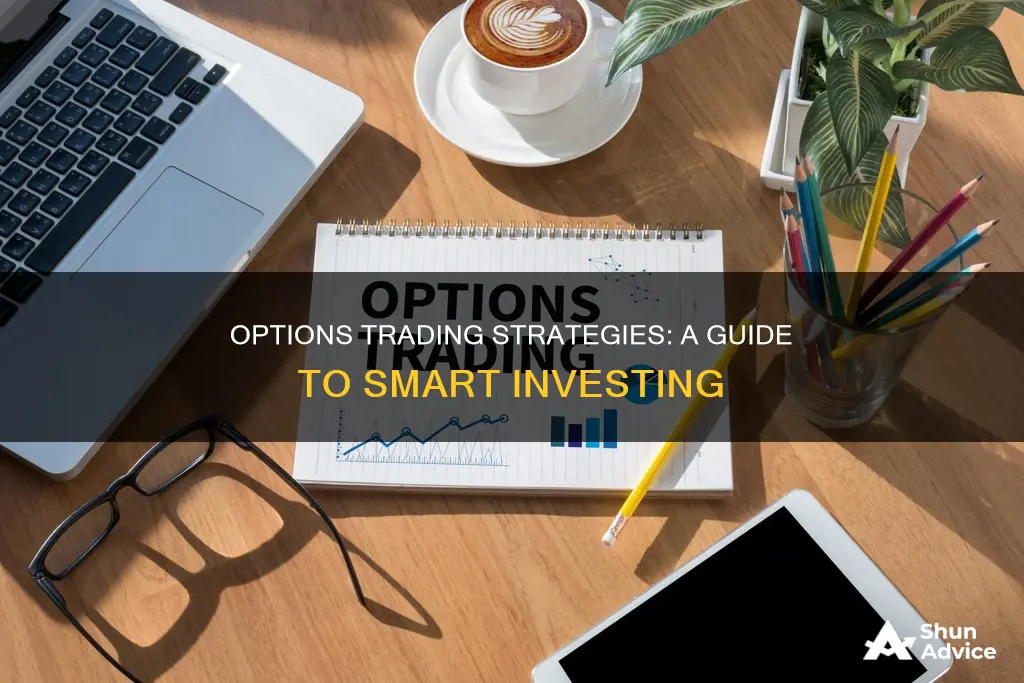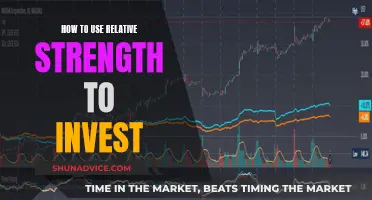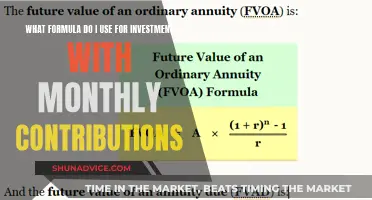
Options trading is a complex and risky investment strategy that can yield big profits or big losses. An option is a contract that gives the buyer the right, but not the obligation, to buy or sell a stock's index or future at a specific (strike) price before a specified date in time (expiry date). Options are derivatives, meaning they derive their value from something else, usually a stock or stock index.
There are two types of options: call options and put options. With a call option, you buy the possibility to buy an underlying security at a fixed price. With a put option, you buy the possibility to sell an underlying security at a fixed price.
When trading options, you must determine your objective, search for options trade ideas, place your trade, and manage your position. It's important to understand the risks and rewards of options trading and to not get your eyes fixed on the potential upside.
| Characteristics | Values |
|---|---|
| Type of option | Call option, put option |
| Option contract | Relates to 100 underlying values |
| Option type | Call (right to buy), put (right to sell) |
| Expiration date | Date by which option must be exercised |
| Exercise price | Price at which underlying value can be bought or sold |
| Option price | Premium |
| Limit order | Buy option at a predetermined price |
| Market order | Buy option at the available price |
| Intrinsic value | Actual value of an option |
| Expectation value | Higher when there is high volatility, the expiration date is far in the future, and the price is close to the strike price |
What You'll Learn

Understand the basics of options trading
Options trading is a complicated and risky financial opportunity that offers investors a chance to diversify their portfolios, make gains, and protect their other investments. Options are contracts that give the buyer the right, but not the obligation, to buy or sell a stock's index or future at a specific ("strike") price before a specified date in time ("expiry date").
When you buy a call option, you are buying the possibility to buy an underlying security at a fixed price. When you buy a put option, you are buying the possibility to sell an underlying security at a fixed price. For example, if you buy a call option on a stock for $1 with an exercise price of $10, you pay a total of 100 times $1 for the option contract, so the premium is $100. If the stock price is above $10 at the expiry date, you make a profit. If it is below, you will not exercise the option and will lose the premium.
A put option gives you the right to sell a specific number of shares (usually 100) of the underlying security at a certain price by a certain date. For example, if you buy a put option on a stock for $1 with an exercise price of $10, you pay a premium of $100. If the stock price is below $10 at the expiry date, you make a profit. If it is above, you will not exercise the option and will lose the premium.
Options are available from almost all online brokerages and from brokers at large financial institutions. The cost of an options contract, or the right to the option, is called the premium. This premium is charged by the seller of the option even if the buyer decides not to use the option. The premium is listed per share, while options contracts are generally for 100 shares. For example, a premium might be listed as $0.25, but this would cost $25.00 (0.25*100) for the entire contract of 100 shares.
When you buy an option, remember which way you think the security's price will move. Buy the appropriate option at the right strike price and time for you to make a profit. For example, imagine that you think a security currently trading at $40 will be trading for $60 in three months. You see an option priced with a strike price at $45 in three months and a premium of $0.50. If the stock performs as expected, you will see a sizable profit when you exercise the option.
Advantages and Disadvantages of Options Trading
Options offer flexibility, diversification, and a certain amount of protection against loss, all for a fairly inexpensive cost. For instance, if stocks for a particular company are selling for $100 per share, you could buy 100 shares for $10,000. However, the option for that same company might be at eight points, and stocks are generally traded in blocks of 100, meaning the same amount of stock would cost you only $800! Even if you lose money, you cannot lose more than the premium, or price of the option. On the other hand, your potential for profit has no limit.
However, options trading is complicated and risky. 75% of options never become "in the money" and are therefore never executed. When an option expires worthless, you lose the entire premium, and you can quickly lose 100% of your investment. When you write call and put options, your losses can be almost unlimited. If the stock price suddenly rises or falls significantly, you can lose many times your initial investment. Options are therefore not suitable for novice investors but rather for investors who already have some experience with stock trading.
Target's Overseas Strategy: Direct Investment Approach?
You may want to see also

Learn the difference between puts and calls
"Put" and "call" options are the two main types of options available to investors.
When you purchase a call option, you are guaranteeing that you can buy a specific number of shares (usually 100 shares per contract) of the underlying security at a certain price by a certain date.
A put option guarantees you can sell a specific number of shares (again, usually 100) of the underlying security at a certain price by a certain date.
Call options are contracts that give the holder the right to buy an underlying asset (such as a stock) at a fixed price (also called the strike price) on or before a specific date in the future. The hope of the option holder is that before the option expires, the stock's spot (market) price will be greater than the strike price, enabling them to buy the underlying shares below market value.
If you own a put option, you have the right to sell a share of stock at a strike price agreed upon at the time the contract was created up until an expiration date. You'll pay a non-refundable premium for each share associated with the put option.
In this case, the option holder hopes that the stock's market price will fall below the strike price, enabling them to sell shares for more than their market value. When the market price of a put option's underlying asset is less than the strike price, the put option is described as being "in the money".
The major difference between call and put options is that the former allows holders to "call" or purchase the underlying asset, while the latter lets the holder "put" or sell that asset. The opposite is true for the seller, as the seller of a call option is obligated to sell the underlying asset should the holder exercise the contract, while the seller of a put option will be required to purchase the underlying asset.
Robinhood Brokerage Cash: Investing Strategies for Beginners
You may want to see also

Know how to buy an option
An option is a contract that gives the buyer the right, but not the obligation, to buy ("call") or sell ("put") a stock's index or future at a specific ("strike") price before a specified date in time ("expiry date").
There are two types of options: call options and put options. A call option gives the owner the right to buy a stock at a specific price. The owner of the call is not obligated to buy the stock. A put option gives the owner the right, but not the obligation, to sell a stock at a specific price.
When you buy a share, the price is always fixed. However, you can buy different options on the same share at different prices. This is because the exercise price, expiration time, and premium to be paid are different.
The price of an option is naturally determined by its attractiveness to the buyer. A call option with a strike price below the current market price yields an immediate profit and is therefore very favourable. A similar option will therefore be traded at a higher price.
There are three possibilities for call options:
- In the money: the strike price is below the current market price, which makes it immediately valuable.
- At the money: the strike price is equal to the current market price.
- Out of the money: the strike price is higher than the current market price and is worthless.
When placing an order on an option, you can use two types of orders:
- Limit order: you only buy the option at a predetermined price.
- Market order: you buy the option at the available price.
The value of an option is determined by the intrinsic value plus the expectation value. The intrinsic value is the actual value of an option. For example, if you have a call option that gives you the right to buy a stock that currently costs $30.00 for $25.00, you immediately make $5.00 profit per share. The intrinsic value is then $5.00.
As an investor, the expectation value is especially relevant. The expectation value is higher when:
- There is high volatility.
- The expiration date is far in the future.
- The price is close to the strike price.
The price of an option can fluctuate strongly due to these developments. For example, if volatility increases or the price of the underlying asset moves in the right direction, the option can become more valuable. At the same time, the option will become less valuable over time, as there are fewer days left to move in the favourable direction.
When buying an option, you must first qualify to trade options with your brokerage account. This requires completing an options application and reading and signing an options agreement. The process of buying options is similar to buying stock, with a few differences.
You would begin by accessing your brokerage account and selecting a stock for which you want to trade options. Once you have selected a stock, you would go to the options chain. An options chain is where all options contracts are listed. After you’ve selected the specific options contract that you’d like to trade, an options trade ticket is opened and you would enter a buy-to-open order to buy call options. Then you would make the appropriate selections (type of option, order type, number of options, and expiration month) to place the order.
A Beginner's Guide to Investing in Nasdaq Stocks
You may want to see also

Know how the value of an option is determined
The value of an option is determined by a combination of factors, including the underlying stock price, strike price, time until expiration, volatility, and interest rates. These factors are reflected in two components that make up an option's premium: intrinsic value and time value.
Intrinsic Value
The intrinsic value of an option is the difference between the underlying stock price and the strike price if the option is in the money. In other words, it is the amount of the premium that comes from the price difference between the current stock price and the strike price. For example, if you have a call option with a strike price of $45 on a stock trading at $49 per share, and the option premium is $5, then $4 of the premium is intrinsic value.
Time Value
The time value, or extrinsic value, of an option is the amount of premium above its intrinsic value. It is the monetary value associated with the time remaining until an option's expiration. The more time there is until expiration, the higher the time value, as investors have a higher probability of the contract being profitable. As the expiration date approaches, the time value decreases, and options buyers may watch their purchased options decline in value.
Other Factors Affecting Option Pricing
In addition to intrinsic and time value, other factors come into play in options pricing. Volatility, or the rate at which a stock's price fluctuates, influences the probability of an option expiring in the money, and options traders will demand a higher price for options if they expect volatility. Implied volatility is a measure of the market's view of the probability of a stock's price changing, and it can inflate option premiums. Interest rates also play a role, with higher interest rates generally increasing call option values and decreasing put option values. Finally, dividends can affect option prices, as they typically cause a stock's price to drop, making call options less valuable and put options more valuable.
Option Pricing Models
While understanding the basic components of option pricing is crucial, experienced traders often use sophisticated mathematical models, such as the Black-Scholes model and the binomial model, to calculate theoretical option prices. These models take into account various factors, including the current stock price, strike price, time until expiration, volatility, and interest rates, to determine a theoretical option price.
Deferred Revenue Cash: Invest or Not?
You may want to see also

Understand the risks and disadvantages of investing in options
Options are risky investment instruments. They are derivatives contracts that give the buyer the right, but not the obligation, to buy or sell a fixed amount of an underlying asset at a set price on or before the contract expires. While options can be a source of slow-and-steady returns, they can also expose an investor to unlimited losses.
- Losing your entire investment: If an option expires worthless, you lose the entire premium, and you can quickly lose 100% of your investment.
- Unlimited losses for writers: When you write call and put options, your losses can be unlimited. If the stock price suddenly rises or falls significantly, you can lose many times your initial investment.
- Not suitable for beginners: Options are not suitable for novice investors but rather for investors who already have some experience with stock trading.
- Predicting short-term price movements: Options investors are looking to capitalize on a near-term price movement, which must take place within days, weeks or months for the trade/contract to pay off. That requires making two correct assumptions: picking the right time to buy the option contract, and deciding exactly when to exercise, sell or walk away before the option expires.
- Margin requirements: Some options trading strategies require investors to set up a margin account, which can run up trading costs.
- Complexity: Options have more moving parts and complexity than simply owning stocks. This can lead to unintended risks or losses if newer traders misuse more advanced strategies or don't fully understand option pricing.
- Time commitment: Getting started with options trading can be time-consuming. You must apply for approval through your broker, submit background information, take a quiz, and simultaneously apply and be approved for margin trading on your account.
Cash Reserves: Smart Investment Strategy or Missed Opportunities?
You may want to see also
Frequently asked questions
An option is a contract that gives the buyer the right, but not the obligation, to buy ("call") or sell ("put") a stock's index or future at a specific ("strike") price before a specified date in time ("expiry date").
The two types of options are call options and put options. With a call option, you buy the possibility to buy an underlying security at a fixed price. With a put option, you buy the possibility to sell an underlying security at a fixed price.
Options trading can be risky, but it can offer investors a unique way to profit from stock swings or generate income. The pros are that you could make a little extra money on investing in the short term. The con is that you could lose everything, depending on how you structure your options trading.
To get started with options trading, you'll need to open an options trading account and choose a broker. You'll then need to choose whether to buy or sell puts or calls, and choose an appropriate strike price and timeframe.
Options trading strategies include buying puts, buying calls, and covered calls.







